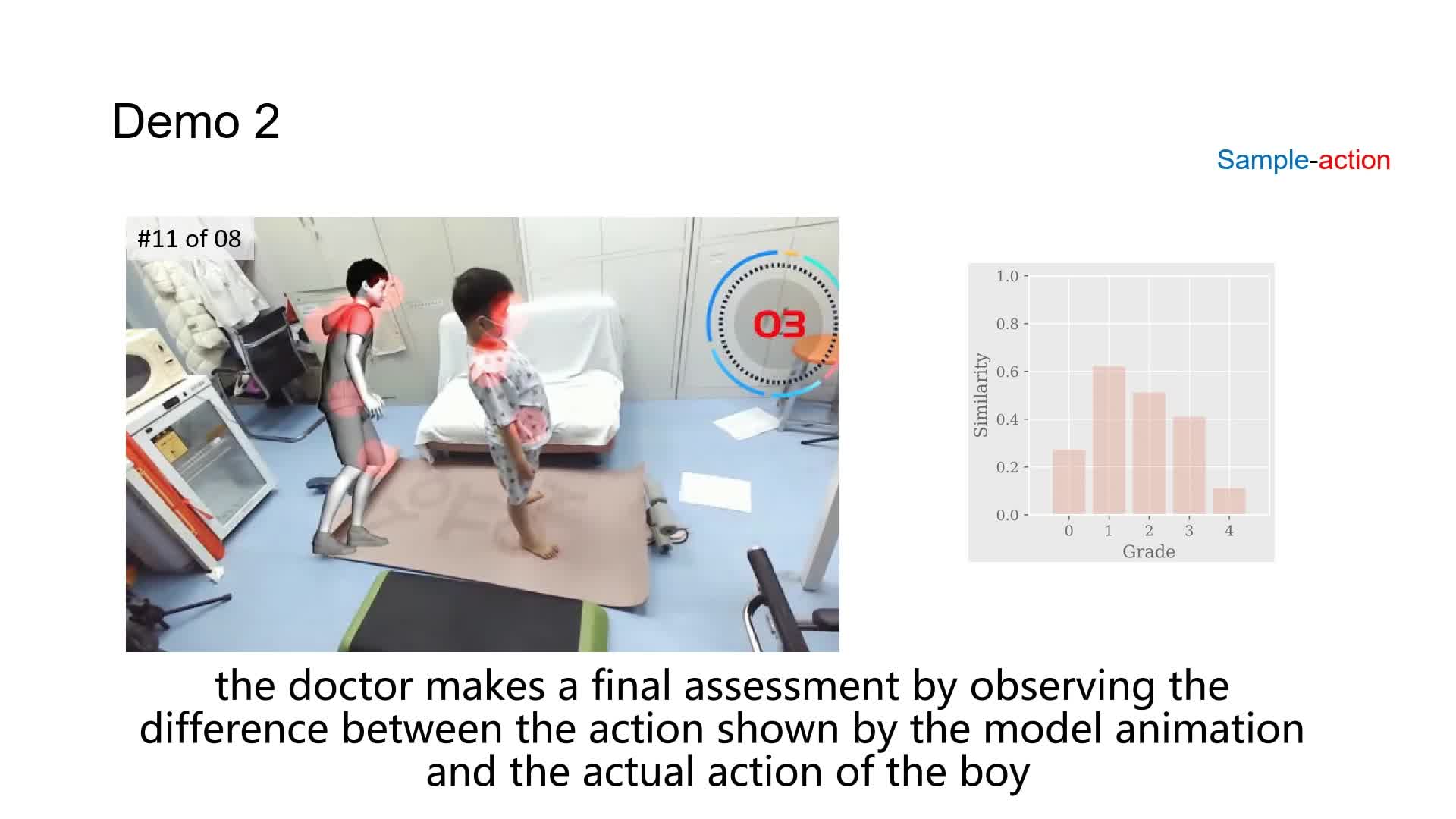A Video-Based Augmented Reality System for Human-in-the-Loop Muscle Strength Assessment of Juvenile Dermatomyositis
Kanglei Zhou, Ruizhi Cai, Yue Ma, Qingqing Tan, Xinning Wang, Jianguo Li, Hubert P. H. Shum, Frederick W. B. Li, Song Jin and Xiaohui Liang
IEEE Transactions on Visualization and Computer Graphics (TVCG) - Proceedings of the 2023 IEEE Conference on Virtual Reality and 3D User Interfaces (VR), 2023
Impact Factor: 6.5† Top 10% Journal in Computer Science, Software Engineering† Citation: 21#

Abstract
As the most common idiopathic inflammatory myopathy in children, juvenile dermatomyositis (JDM) is characterized by skin rashes and muscle weakness. The childhood myositis assessment scale (CMAS) is commonly used to measure the degree of muscle involvement for diagnosis or rehabilitation monitoring. On the one hand, human diagnosis is not scalable and may be subject to personal bias. On the other hand, automatic action quality assessment (AQA) algorithms cannot guarantee 100% accuracy, making them not suitable for biomedical applications. As a solution, we propose a video-based augmented reality system for human-in-the-loop muscle strength assessment of children with JDM. We first propose an AQA algorithm for muscle strength assessment of JDM using contrastive regression trained by a JDM dataset. Our core insight is to visualize the AQA results as a virtual character facilitated by a 3D animation dataset, so that users can compare the real-world patient and the virtual character to understand and verify the AQA results. To allow effective comparisons, we propose a video-based augmented reality system. Given a feed, we adapt computer vision algorithms for scene understanding, evaluate the optimal way of augmenting the virtual character into the scene, and highlight important parts for effective human verification. The experimental results confirm the effectiveness of our AQA algorithm, and the results of the user study demonstrate that humans can more accurately and quickly assess the muscle strength of children using our system.
YouTube
Cite This Research
Supporting Grants
EPSRC Digital Health Hub Pilot Scheme (Ref: EP/X031012/1): £4.17 million, Co-Investigator (PI: Prof. Abigail Durrant)
Received from The Engineering and Physical Sciences Research Council, UK, 2023-2026
Project Page
















